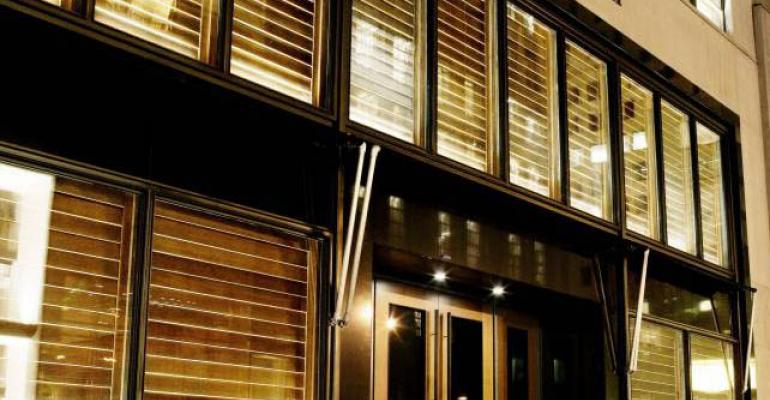(Bloomberg Gadfly)—If the idea that some retailer might be interested in taking over Abercrombie & Fitch Co. surprises you, you're not alone.
In today's dour retail climate, why would any company want to buy a struggling teen specialty brand that hasn't been relevant since its appearance in LFO's 1999 track, "Summer Girls"? Its sales are shrinking, it hardly owns any real estate, and most of its stores are housed in traffic-dwindling malls.
Yet shareholders pushed Abercrombie stock higher by as much as 10 percent Wednesday on a Reuters report it was in deal talks with unnamed suitors. The Wall Street Journal later reported American Eagle Outfitters Inc. and Express Inc. were among the potential bidders.
As it turns out, there is a case to be made for an Abercrombie buyout.
For one thing, it's a bargain. Its shares have plunged 50 percent in the past year. Its market value, as high as $4 billion five years ago, is now well below $1 billion.
More importantly, a private equity buyer or a strategic buyer such as L Brands Inc. could snag Abercrombie's crown jewel -- Hollister -- on the cheap, while getting the rest of the company essentially for free.
There have been only a handful of comparable specialty-apparel takeovers in recent years, including Ascena Retail Group's acquisition of Ann Inc. and Apax Partner's acquisition of rue21. These companies have tended to sell for more or less the same amount as their trailing 12-month revenue.
Abercrombie, meanwhile, is worth less than $1 billion, even after its latest stock-price surge, with trailing sales of $3.3 billion. Hollister alone had revenue of $1.8 billion in the past year. Even a purchase at a 20 percent premium to Wednesday's share price would set a buyer back just $1.1 billion for all of Abercrombie, making this one of the cheapest such deals in years relative to revenue.
Earlier this year, I made the case for Abercrombie to spin off Hollister. Teens actually think Hollister, unlike its corporate parent, is cool. And its year-over-year sales are growing, a rarity for specialty apparel retailers these days. Hollister makes up 60 percent of Abercrombie's 900 store locations and more than half its revenue.
And there is value in certain other parts of Abercrombie -- particularly for companies such as V.F. Corp. or PVH Corp., which buy wholesale brands like North Face and Calvin Klein, expand sales internationally, and turn them into multi-billion-dollar brands without a hefty store footprint.
The same thing can be done with Abercrombie, which could shut down stores and re-emerge as a wholesale brand. It has already had some success partnering with high-growth e-commerce retailers such as Zalando, Europe's largest e-commerce player, and Asian fashion website Zalora. Online sales now make up 30 percent of Abercrombie's revenue.
With about 50 percent of Abercrombie's store leases expiring by the end of 2018, the company has the flexibility to shutter stores and rid itself of that dead weight.
The old-school Abercrombie -- which needed teenagers to hit the mall for preppy chinos and popped-collared polos -- wouldn't be such a smart buy. But a creatively structured transaction that unlocks the value in Hollister, along with Abercrombie's wholesale potential, could be. Especially as the price is right. -- With assistance from Brooke Sutherland.
This column does not necessarily reflect the opinion of Bloomberg LP and its owners.
Shelly Banjo is a Bloomberg Gadfly columnist covering retail and consumer goods. She previously was a reporter at Quartz and the Wall Street Journal.
To contact the author of this story: Shelly Banjo in New York at [email protected] To contact the editor responsible for this story: Mark Gongloff at [email protected]
COPYRIGHT
© 2017 Bloomberg L.P

